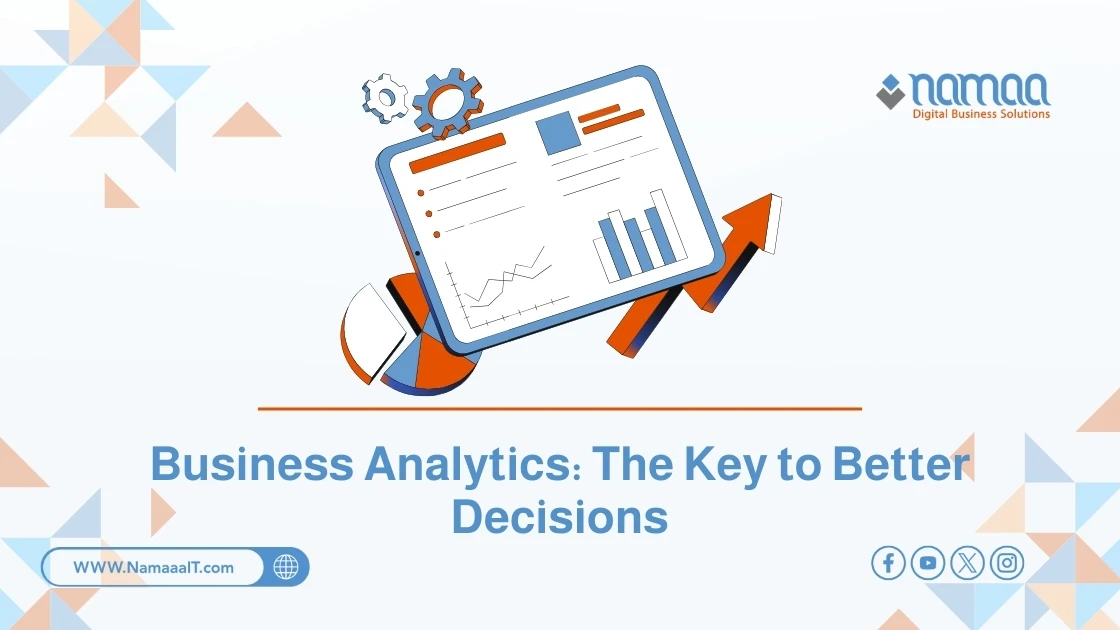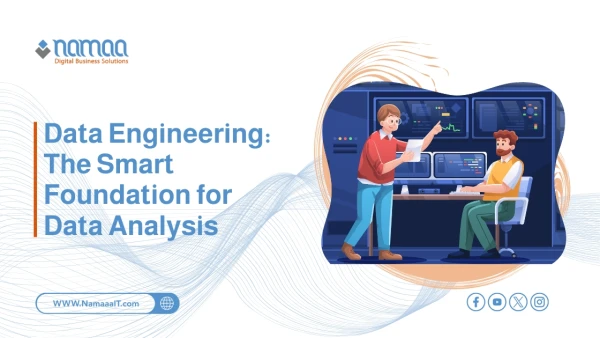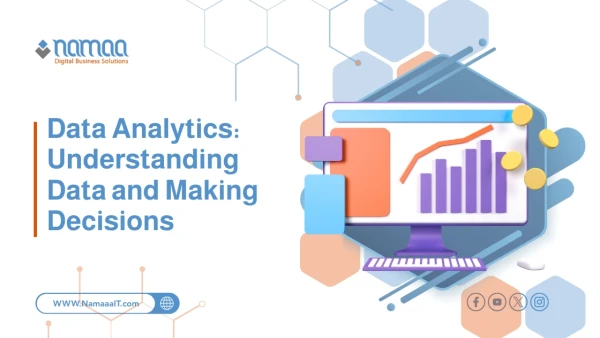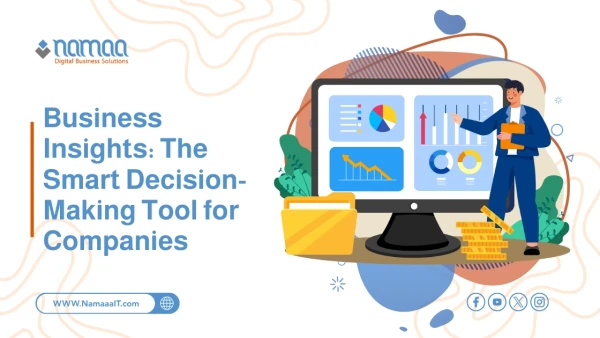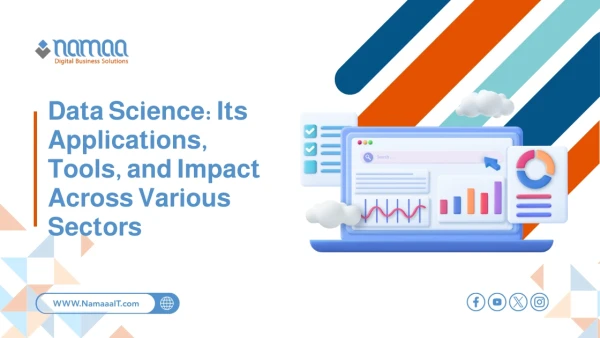Data is no longer just numbers stored in databases—it has become one of the most important assets for any company aiming for stable growth.
Business analytics is the tool that enables organizations to transform this data into actionable decisions. By using statistical analysis techniques and predictive models, hidden trends can be uncovered, market behavior understood, and performance improvement opportunities identified with precision. This type of analysis is not just used for reporting; it is used to guide policies and determine next steps with greater confidence.
What is Business Analytics and Why is It Important for Companies?
Business analytics refers to the use of statistical methods, technological tools, and data models to analyze information and make more accurate and effective decisions. The core idea of business analytics is not limited to knowing what happened in the past—it extends to understanding why it happened, predicting what might happen next, and suggesting the best possible courses of action. In other words, it's the science of data-driven decision-making.
The importance of business analytics lies in its ability to transform massive volumes of unstructured data into actionable insights. Companies that adopt this approach can better understand market patterns, customer behavior, operational weaknesses, and areas for improvement. For instance, a company using analytics in marketing can identify the most effective campaigns or even the ideal timing for their launch. In the manufacturing sector, analytics can be used to reduce waste and improve supply chain operations.
Moreover, business analytics offers a competitive advantage. In saturated and fast-changing markets, organizations need precise and swift responses based on real information—not guesswork. Using analytics is no longer an optional add-on; it is a fundamental element in building strategies, measuring performance, and adapting to continuous change. By integrating this methodology across various departments, a company becomes more capable of achieving efficiency, growth, and sustainability.
The Difference Between Business Analytics and Business Intelligence
The terms Business Analytics (BA) and Business Intelligence (BI) are often confused, although each has a distinct function in the data analysis and decision-making ecosystem. The main difference lies in their goals and approaches. Business Intelligence focuses on analyzing historical data and providing reports that help understand what happened, while Business Analytics goes further to answer why it happened, what will happen, and what should be done.
Business Intelligence relies heavily on visualization tools and dashboards that show real-time performance and typically serve non-technical users like executives. In contrast, Business Analytics uses advanced techniques like statistical modeling, machine learning, and predictive analytics, and often requires data science specialists.
In short, BI explains the past, while BA helps make decisions for the future. For example, if BI dashboards show a drop in sales, BA tries to explain the reason behind the drop, predict its future impact, and suggest solutions to handle it.
In the modern work environment, the two approaches complement rather than replace each other. Successful organizations use BI to monitor performance and rely on BA for deeper insights that guide strategic, sustainable growth decisions.
read more: Data Engineering
Types of Business Analytics
Business Analytics includes four main types, each used according to the need and nature of the decision required. Understanding these types allows companies to choose the most suitable approach for addressing problems or seizing opportunities:
Descriptive Analytics – Answers the question: "What happened?"
Used to generate summaries from data, such as growth rates, customer counts, or revenue over a specific period. Tools include traditional reports and dashboards.
Diagnostic Analytics – Focuses on: "Why did it happen?"
Uses advanced tools like data mining and root cause analysis to identify relationships between variables. This type helps companies understand the causes of problems or successes.
Predictive Analytics – Addresses: "What might happen?"
Relies on statistical models and algorithms to analyze past patterns and forecast the future. For example, an airline might predict flight cancellations or an e-commerce company might forecast customer purchasing behavior.
Prescriptive Analytics – Answers: "What should be done?"
Aims to provide practical recommendations based on data and forecasts. This type uses AI and simulation techniques to offer optimal decisions or multiple alternatives.
Each of these types serves a different purpose, and when combined into a comprehensive strategy, the organization becomes capable of making more informed and proactive decisions.
Top Business Analytics Tools in 2025
As of 2025, business analytics tools continue to play a critical role in turning data into actionable insights. Among the most popular and widely used tools are Tableau, Power BI, and SAS Analytics—each offering features suited to different user types and business needs:
Tableau stands out for its advanced visualization capabilities and ease of creating interactive dashboards. It is widely used in organizations focused on deep visual analysis and supports integration with multiple databases. Its strength lies in its drag-and-drop functionality and speed in analyzing complex data.
Power BI, from Microsoft, is the ideal choice for companies using Microsoft products like Excel and Azure. It is more affordable than many alternatives, easy to learn, and integrates seamlessly with other Microsoft tools. It also offers strong analytical power and shareable dashboards within the business environment.
SAS Analytics is more suitable for advanced professionals and environments requiring deep, complex analysis, such as healthcare or finance sectors. It provides robust tools for statistical modeling and predictive analytics and is used in scenarios that demand high precision and customization.
Each tool has its target audience and use cases. The right choice depends on data volume, required analysis level, and technical integration in the organization.
How is Artificial Intelligence Used in Business Analytics?
Artificial Intelligence (AI) has become an essential part of modern business analytics, offering an unprecedented ability to handle large and complex data quickly and accurately. Instead of just analyzing historical data, AI enables forecasting future outcomes and providing smart recommendations based on learning from past patterns.
One of AI's key applications is in predictive analytics, where machine learning algorithms help build models that forecast customer behavior, product performance, or even market trends. For instance, an AI-powered model can predict customer churn before it happens, allowing companies to take proactive steps.
AI is also used in prescriptive analytics, where it not only predicts what might happen but also suggests the best decisions based on data and forecasts. In retail, for example, AI can automatically optimize inventory management based on projected demand. In human resources, smart algorithms can analyze resumes to identify the best job candidates.
By using AI, human involvement in routine analysis can be minimized, saving time and effort for working teams, which enhances decision-making speed and accuracy.
Time Series Analysis
Time Series Analysis is one of the most accurate and effective tools in business analytics when it comes to forecasting. It relies on data collected over time to understand seasonal and cyclical patterns and predict future behavior based on past trends.
The key difference between time series analysis and traditional analytics is that time is a central component in the models. This type of analysis is used across a wide range of fields, such as forecasting monthly sales, predicting energy consumption, or estimating future demand for a particular product. Popular models used include ARIMA (Autoregressive Integrated Moving Average), Exponential Smoothing, and machine learning-based models such as LSTM (Long Short-Term Memory).
Practical example: An e-commerce company uses time series analysis to forecast demand during the sales season. By analyzing data from previous years, they can prepare with appropriate inventory levels, identify the most effective offers, and thus reduce waste and increase profits.
The advantage of this type of analysis is that it enables proactive decision-making based on actual data rather than guesswork. The more accurate the data and the better the model quality, the more reliable the forecasts. This makes time series analysis a vital tool for companies that rely on forecasting to make precise operational and strategic decisions.
Using Business Analytics in Marketing to Improve ROI
Business Analytics has become an essential tool in modern marketing, especially when the goal is to enhance Return on Investment (ROI). By collecting and analyzing data related to customer behavior, campaign interactions, and purchasing patterns, marketing teams can make informed decisions that boost the effectiveness of marketing strategies and reduce unnecessary spending.
For example, by using Predictive Analytics, marketers can forecast customer behavior such as the likelihood of responding to a specific offer or abandoning a shopping cart. Customer Segmentation Analytics helps divide the audience based on characteristics like age, location, or digital behavior, enabling tailored messaging for each segment to achieve better results.
Business analytics is also used to identify the most effective marketing channels — whether email, social media, or paid advertising — based on real performance rather than assumptions. This kind of tracking and analysis helps allocate the budget to the highest-yielding channels.
The end result is reduced advertising waste, improved user experience, and increased conversion rates. Over time, analytics enable marketing teams to develop more targeted and dynamic strategies, resulting in a higher return for every dollar spent, and greater customer loyalty and satisfaction.
The Role of Business Analytics in Improving Financial Company Performance
In the financial sector, where decisions are highly precise and risks are significant, Business Analytics is a key component for enhancing performance and reducing risks. Financial institutions use Data Analytics to understand market trends, assess risk, and optimize resource allocation — including banks, insurance companies, and asset managers.
A crucial application is Risk Modeling, where analytics help predict the likelihood of defaults or market downturns, enabling institutions to take preventive actions like adjusting interest rates or changing credit terms. Predictive analytics are also used to assess customer creditworthiness faster and more accurately than traditional methods.
In investment management, advanced algorithms can analyze market movements to identify optimal buying or selling opportunities. Portfolio Analytics help evaluate asset performance over time and compare returns against risk.
Even in compliance and regulation, business analytics are used to detect anomalies or fraudulent activities by monitoring financial data in real time. Dynamic dashboards provide instant insights that help management teams make quick, evidence-based decisions.
Thanks to these applications, business analytics has evolved into a strategic tool, not just an operational support, contributing to enhanced profitability, cost control, and more efficient and flexible financial services.
How Business Analytics Helps Improve Supply Chain and Reduce Waste
Today’s supply chains are complex and rely heavily on balancing supply and demand. Business Analytics is a powerful tool for maintaining this balance and achieving greater operational efficiency. By analyzing data from procurement, inventory, distribution, and market demand, companies can accurately identify gaps and opportunities in the supply chain.
For example, Time Series Forecasting helps predict demand, reducing overstock or stockouts. Inventory Analytics identifies slow-moving products and optimizes the order and delivery cycle to reduce hidden costs.
Another valuable tool is Supplier Analytics, which evaluates supplier performance in terms of punctuality, shipment quality, and cost — enabling better decisions about which suppliers to continue working with. Logistics Analytics also identifies bottlenecks and reduces shipping times, improving efficiency and minimizing waste in time and resources.
When business analytics is applied in the supply chain, it doesn’t just enhance operations; it turns the supply chain into a competitive advantage. Companies become more responsive to market fluctuations, reduce losses, and achieve real savings without compromising service or quality.
Business Analytics in Human Resources
HR management no longer relies solely on personal evaluations or traditional experience. Today, Business Analytics is a key part of improving every people-related decision within an organization. With data, HR teams can understand hiring trends, employee turnover rates, workforce performance, and measure the impact of training and development programs.
A common application is Employee Retention Analytics, where resignation, promotion, and leave data are analyzed to predict potential employee turnover. This enables proactive actions like improving workplace conditions or adjusting compensation systems.
Recruitment Analytics is also used to develop hiring strategies by identifying the most effective talent sources and shortening the hiring cycle. By studying job performance in relation to certain qualifications, organizations can focus their efforts on attracting the most suitable candidates.
Even performance evaluations are increasingly based on clear, digital indicators rather than subjective impressions, ensuring greater fairness and transparency. Using predictive analytics, organizations can also identify potential leaders among current employees, supporting future leadership continuity.
Applying Business Analytics in Sales
Sales is a domain where speed and market insight are critical. Business Analytics has become a strategic tool for improving sales performance, increasing revenue, and forecasting opportunities more accurately. Instead of relying solely on intuition or past experience, analytics provide a deep understanding of customer behavior and purchasing patterns.
By using Trend Analysis and Predictive Modeling, sales teams can anticipate peak demand periods, identify high-performing products, and target customers likely to make repeat purchases. This allows marketing efforts and promotions to be directed at the most profitable segments, increasing sales volume and reducing operating costs.
CRM Analytics also improve customer relationship management by identifying missed opportunities, understanding customer loss reasons, and addressing pain points in the Customer Journey. It also enables accurate analysis of sales reps' performance to highlight strengths and areas for development.
Business Analytics in Major Companies
Amazon and Netflix offer some of the best real-world examples of how Business Analytics can evolve from merely a supportive tool into a decisive factor for achieving global leadership. Both companies have built their core strategies around understanding data and leveraging it to maximize value.
Amazon, for instance, uses business analytics in every detail of its operations—from personalized product recommendations based on previous purchasing patterns to improving inventory management through accurate forecasting of local demand. Through time series analysis and machine learning, Amazon can predict customer behavior in a way that makes the shopping experience smoother and more efficient, which raises customer satisfaction and increases conversion rates.
Netflix relies heavily on data analytics to understand viewer preferences with great precision. By studying watch history, ratings, and pause/resume behavior, Netflix can offer highly personalized content recommendations, which has led to higher subscriber retention rates. It also uses business analytics to make investment decisions in original content, identifying the types of series or movies with the highest chances of success based on deep data analysis.
The clear lesson from Amazon and Netflix is that business analytics isn't just about optimizing operations—it can be the foundation for building a sustainable competitive advantage that changes the rules of the market entirely.
Summary
✅ Business analytics increase the likelihood of making accurate decisions by 70%, according to recent studies.
✅ Using business analytics improves marketing campaign ROI by up to 25%.
✅ HR analytics reduce employee turnover by 20% by analyzing performance and job satisfaction data.
✅ 80% of major financial institutions rely on predictive analytics to assess credit risk and reduce potential losses.
✅ Sales forecasts based on business analytics are 50% more accurate than traditional forecasts.
✅ Amazon sees a 29% annual increase in sales through business analytics-powered recommendation systems.
✅ Netflix spends over $15 billion annually on content selected through viewership data analysis.
✅ Supply chain analytics reduce average inventory costs by 15%-20% through accurate demand forecasting.
✅ Integrating AI into business analytics increases data analysis speed by 60% compared to traditional methods.
✅ Tools like Tableau, Power BI, and SAS improve analytics team productivity by up to 40%.
✅ Organizations that successfully implement business analytics achieve 8%-10% annual profit growth.
✅ 67% of HR departments using business analytics describe their hiring decisions as “more accurate.”
✅ Customer data analysis improves retention rates by up to 15% in some industries.
✅ Companies using AI in business analytics report decision-making speed improvements of 5x.

